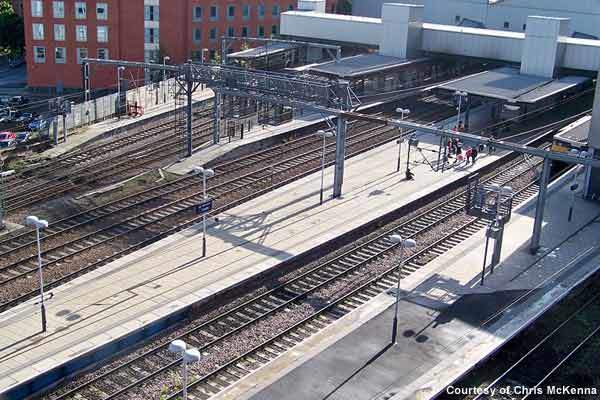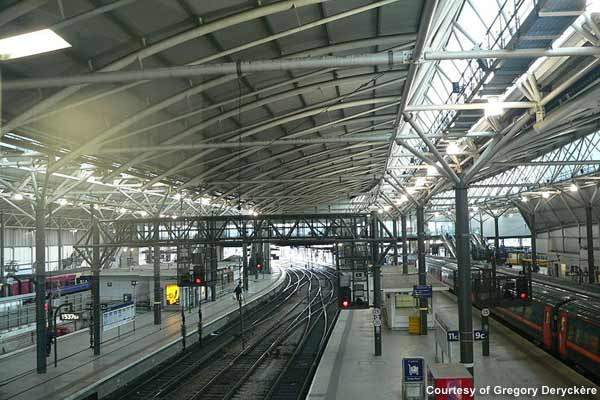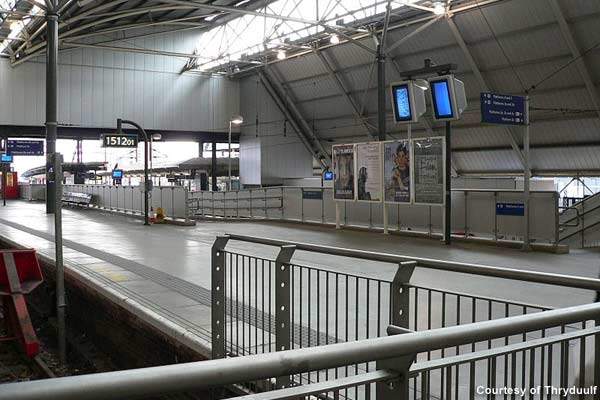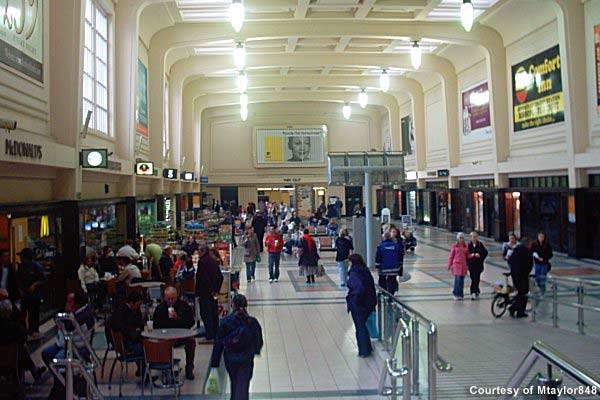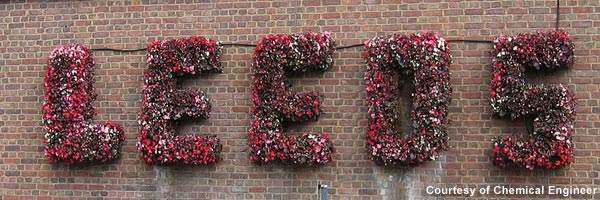Leeds Railway station is the main station serving the central business district of Leeds in West Yorkshire, England. Leeds City station is the second busiest in the UK outside of London. It serves approximately 110,000 passengers a day. The station is operated by Network Rail and has 17 platforms. Opened in 1938, the station has been rebuilt twice, in 1967 and 2002.
Leeds railway station history
Leeds railway station was formed by merging two stations, Wellington and the New Station (opened in 1846 and 1869). The Wellington station was partly converted into a parcels depot. In 1962, the British railway house, currently known as the City House, was also annexed to the station.
Further refurbishment of the station took place in 1967, when the city station became the main serving station of Leeds and the entire traffic from the Central station was diverted towards it. Several 100-year-old bridges running over the Leeds and Liverpool canal were replaced, and a new concourse and completely new roof were constructed during the refurbishment. The station at this time served 2.75 million passengers annually with 12 operating platforms.
With the increase in traffic, a major rebuilding was undertaken between 1999 and 2002. The rebuilding, referred to as Leeds 1st, created additional approach tracks towards the western end of the station. The number of platforms was also increased from 12 to 17. The new platforms were constructed at the south end of the station.
The abandoned parcels depot at the north side was also reopened. In addition, tracks, points and signals were replaced and a glass roof was built in place of the original metal canopy. A new footbridge, a multi-storey car parking and a new station entrance were constructed, while the north concourse was refurbished and retail facilities were expanded.
In 2008, human-controlled ticket checking was replaced by walkthrough automated ticket gates. While the gates were launched by October, severe faults, including invalid ticket acceptance, hampered its operation.
By 2008-2009 the station was serving more than 24.299 million passengers annually.
Leeds station location
The station is located on the New Station Street towards the south of the City Square. Built over the River Aire, the station provides links to London, Bristol, Plymouth, the south west, Nottingham, Birmingham and the English Midlands. In addition to the local and regional localities in Yorkshire, the station provides connections to Newcastle, York, Edinburgh and the North East, Manchester and Liverpool and the North West, Hull, Selby and Doncaster. It serves as the terminus to trains operating on the Settle to Carlisle line and is also the hub of the metro commuter network.
Leeds station facilities
Leeds station is equipped with several facilities such as baby care, a British transport police office, photo booths, first aid and a cash point. A waiting lounge for first class ticket holders, a left luggage and lost property zone, a trolley point, telephones, taxis, post box and lifts are also available at the station.
Future station developments
As of 2010, plans are underway to build a new southern entrance at Leeds station. Network Rail, in collaboration with Metro, is working on a scheme to provide connection from Leeds station to the southern zone of the city, which has experienced a spurt in residential growth.
The western footbridge of the station will be widened, and stairs, escalators and lifts will be provided to a partial bridge over the river Aire.
Connecting both sides of the river, the bridge will allow passengers to access Little Neville Street or the Holbeck area of the city. The new southern entrance is scheduled for completion in 2012.
A cycle-point will be constructed on the front court of Leeds station. The proposed facility will consist of two storeys and will provide a supervised and safe parking space for approximately 300 cycles. Scheduled for completion in 2010, the facility will be equipped with a counter area, small workshops and staff facilities. Except during the day time, the cycle-point will be unmanned and supported by a secure out-of-hours access system.

